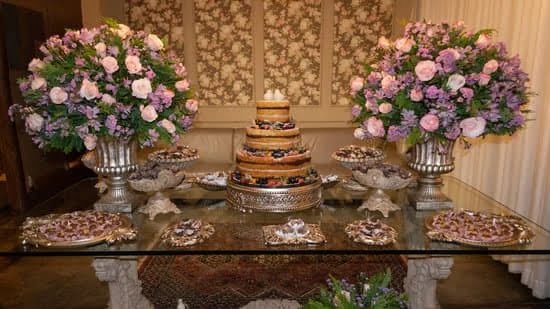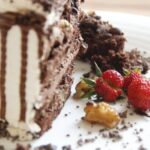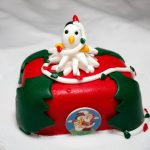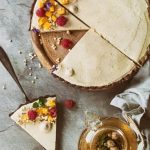Colored sugar is a delightful and versatile addition to cake decorating that can instantly transform an ordinary dessert into a show-stopper. Whether you want to add vibrant pops of color or create subtle pastel hues, colored sugar offers endless possibilities for adding visual appeal and texture to your cakes. In this article, we will explore the world of colored sugar for cake decorating, from understanding different types of colored sugar to learning how to make it yourself at home.
The use of colored sugar in cake decorating has gained popularity over the years due to its ability to bring instant visual impact. It adds a touch of whimsy and fun, making any cake look festive and eye-catching. Colored sugar can be used in various ways, including sprinkling it on top of frosted cakes, creating intricate designs or patterns, or even coating cookies or cupcakes for added texture.
Understanding the different types of colored sugar available is important for anyone interested in cake decorating. There are commercially available options that come in a wide range of colors and consistencies. However, if you prefer a more personalized touch or want to experiment with unique shades, making your own colored sugar at home is an excellent option. With just a few ingredients and tools readily available in most kitchens, you can easily customize your colored sugar creations.
Whether you are new to cake decorating or have some experience under your belt, knowing how to make your own colored sugar opens up a world of possibilities. By gathering essential ingredients like granulated sugar and food coloring, along with basic tools such as resealable bags or mixing bowls, you are well on your way to creating vibrant and eye-catching decorations for your cakes.
In the following sections, we will guide you through step-by-step instructions on making colored sugar as well as share tips and ideas on customization and application techniques.
Join us on this colorful journey as we dive into the world of colored sugar for cake decorating. From homemade recipes to troubleshooting tips and creative application ideas, this article will equip you with all the knowledge and inspiration you need to create beautiful and unique cake decorations that are sure to impress. So let’s dive in and uncover the endless possibilities that colored sugar brings to your cake decorating adventures.
Understanding the Different Types of Colored Sugar
When it comes to decorating cakes, colored sugar is a popular choice for adding a touch of vibrancy and sweetness. In this section, we will discuss the different types of colored sugar available in the market as well as homemade options.
Commercially available colored sugars come in various forms and are widely accessible. One common type is sanding sugar, which has large crystals that reflect light and add sparkle to desserts. Sanding sugar is great for creating texture and can be used to cover entire surfaces or add detail to designs.
Another option is pearlized sugar, which has a pearly finish that adds an elegant touch to cakes and pastries. This type of colored sugar often comes in a finer consistency compared to sanding sugar, making it easier to spread evenly on desserts.
In addition to these options, you can also find sparkling sugars that have edible glitter mixed in for an extra dazzling effect. These sugars are perfect for special occasions or when you want your cake to truly shine.
While commercially available colored sugars offer convenience, making your own colored sugar at home allows for customization and experimentation with different flavors and colors. Homemade colored sugars can be made using granulated sugar and food coloring.
To make homemade colored sugar, start by placing the desired amount of granulated sugar into a resealable plastic bag or container. Add a few drops of food coloring – more drops will result in a more intense color – then seal the bag or container tightly. Shake or knead the bag/container until the food coloring evenly coats the sugar grains. If desired, add more food coloring for a deeper shade.
By understanding the different types of colored sugars available on the market and exploring homemade options, cake decorators can choose what suits their needs best. Whether it’s adding sparkle with sanding sugar or experimenting with custom shades using homemade recipes, colored sugar is sure to elevate any cake decoration project.
| Types | Description |
|---|---|
| Sanding Sugar | Large crystals that add texture and sparkle to desserts |
| Pearlized Sugar | Sugar with a pearly finish for an elegant touch |
| Sparkling Sugar with Edible Glitter | Sugar mixed with edible glitter for a dazzling effect |
| Homemade Colored Sugar | Customizable option made from granulated sugar and food coloring |
Gathering the Essential Ingredients and Tools
When it comes to making colored sugar for cake decorating, having the right ingredients and tools is essential. With a few simple items, you can easily create stunning and vibrant shades of colored sugar to elevate your cake designs. Here is a detailed list of what you will need:
Ingredients
- Granulated Sugar: Start with high-quality granulated sugar as the base for your colored sugar. It provides the perfect texture and consistency for easy application onto cakes.
- Food Coloring: Choose gel or powder-based food coloring for vibrant and intense colors. These types of food coloring are highly concentrated and will give you the desired shade without adding excess moisture to the sugar.
Tools
- Mixing Bowl: Select a clean mixing bowl that is deep enough to allow for easy mixing without spilling any sugar.
- Whisk or Fork: Use a whisk or fork to evenly distribute the food coloring throughout the sugar. This helps ensure that every grain of sugar gets coated with color.
- Airtight Containers: To store your colored sugar properly, invest in airtight containers or jars that will keep humidity and moisture out. This will help preserve the freshness and vibrancy of the colored sugar for future use.
- Measuring Spoons: Have measuring spoons on hand to accurately measure both the granulated sugar and food coloring, ensuring consistent results every time you make colored sugar.
It’s important to gather all these essential ingredients and tools before starting the process of making your own colored sugar for cake decorating. Having everything prepared beforehand will make the process smoother and more enjoyable, allowing you to focus on creating beautiful designs rather than searching for missing items in the middle of your project.
Homemade Colored Sugar Recipe
Making colored sugar at home is easier than you might think. With just a few ingredients and some basic tools, you can create vibrant and eye-catching sugar crystals to elevate your cake decorating game. This step-by-step guide will walk you through the process of making homemade colored sugar using food coloring and granulated sugar.
Ingredients
To make colored sugar at home, you will need the following ingredients:
- Granulated sugar Gel food coloring (preferred for vibrant colors)
- Zip-top plastic bags (one for each color)
- Measuring spoons
Step 1: Preparing the Sugar
Start by measuring out the desired amount of granulated sugar into separate zip-top plastic bags. The amount of sugar you’ll need depends on how much colored sugar you want to make and what color intensity you’re aiming for.
Step 2: Adding Food Coloring
Once you have divided the sugar into individual bags, it’s time to add the food coloring. Gel food coloring works best as it provides more intense colors without adding excess moisture to the sugar. Start with a small amount of gel food coloring and gradually add more until you achieve the desired shade.
Step 3: Mixing and Drying
Seal the plastic bag tightly, ensuring there is no air inside, and knead or shake it vigorously until the color is evenly distributed throughout the sugar crystals. Once mixed, spread out the colored sugar onto a baking sheet lined with parchment paper or a silicone mat.
Allow the colored sugar to dry completely before using it for cake decorating. Depending on humidity levels, this can take anywhere from a few hours to overnight.
By following these simple steps, you can easily create your own vibrant colored sugars at home. Experiment with different shades and combinations to achieve your desired look for your next cake decorating project.
Creating Vibrant and Pastel Colored Sugar
Creating vibrant and pastel colored sugar opens up a world of possibilities for cake decorators. Whether you want to make eye-catching, bold designs or delicate, soft accents, understanding the techniques and tips to achieve your desired shades is essential. Here are some techniques to help you master the art of creating intense and subtle colors with colored sugar:
- Gradual Mixing Technique: Start by adding a small amount of food coloring to a small portion of granulated sugar. Thoroughly mix the two together until the color is evenly distributed. Gradually increase the amount of food coloring as needed until you achieve the desired intensity. This technique allows you to have more control over the color saturation, especially for pastel shades.
- Layering Technique: If you’re looking to create multi-dimensional or gradient effects with your colored sugar, try layering different shades on top of each other. Begin by sprinkling a thin layer of one color on top of your cake or decoration. Then, using another shade, add another layer on top in a different area or in a gradual pattern. Repeat this process with as many colors as desired to achieve a beautiful ombré effect.
- Painted Technique: For more intricate designs or personalized details on your cake, consider using edible paint to apply specific colors onto your colored sugar. Mix food coloring with alcohol-based extracts (such as vodka) or clear vanilla extract for a paint-like consistency. Using a small food-safe brush, carefully apply the colored liquid onto the sugar surface in different patterns or designs.
Remember these additional tips when creating vibrant and pastel colored sugar:
- Start with white granulated sugar for optimal color results.
- Use gel-based food coloring for better control over color saturation.
- Allow homemade colored sugar to air dry completely before use.
- Consider experimenting with different ratios of food coloring to achieve unique shades.
- Protect your work surface when mixing and handling colored sugar to prevent staining.
With these techniques and tips, you will be able to create a wide range of vibrant and pastel colored sugar that will take your cake decorating to the next level.
Customizing Colored Sugar
One of the great things about making your own colored sugar for cake decorating is that you can easily customize it to suit your taste or theme. By adding different flavors to your colored sugar, you can enhance the overall taste of your cake or create unique flavor combinations that will surprise and delight your guests.
Additionally, incorporating edible glitters into your colored sugar can add a touch of sparkle and glamour to your cakes, making them even more visually appealing.
When it comes to adding flavors to colored sugar, there are countless options to choose from. For example, you could infuse your granulated sugar with vanilla extract for a classic and versatile flavor. Other popular flavorings include almond extract for a subtle nuttiness, lemon extract for a refreshing citrus note, or even rosewater for a floral twist.
Simply mix the flavoring into the granulated sugar before adding the food coloring and follow the recipe as usual. The result will be colored sugar with an added delicious depth of flavor.
If you’re looking to take your colored sugar decorations to the next level, consider incorporating edible glitters into your creations. Edible glitters are available in a wide range of colors and finishes, including metallics and holographics.
These glitters add a dazzling effect to your cake decorations and can be sprinkled over the top of the colored sugar or mixed in before drying. Just be sure to use edible glitters specifically made for consumption so that they are safe to eat.
| Flavor/Edible Glitter | Description |
|---|---|
| Vanilla Sugar + Gold Edible Glitter | A classic combination with a touch of sparkle |
| Raspberry Sugar + Pink Edible Glitter | A fruity and vibrant option for summer-themed cakes |
| Citrus Sugar + Yellow Edible Glitter | A refreshing and zesty combination for citrus-flavored cakes |
| Lavender Sugar + Purple Edible Glitter | A floral and glamorous choice for elegant cake designs |
By adding flavors and edible glitters to your colored sugar, you can truly elevate its versatility and appeal. Experiment with different combinations to find your favorites, and don’t be afraid to get creative. The possibilities are endless when it comes to customizing your own colored sugar for cake decorating.
Storing and Preserving Colored Sugar
When it comes to colored sugar, proper storage is crucial to maintain its freshness and vibrant colors. Here are some best practices for storing homemade colored sugar:
Choose the Right Container
To preserve the quality of your colored sugar, it’s important to select the right container. Opt for airtight containers made of glass or plastic with a secure lid. Choose containers that are specifically designed for food storage to ensure they do not absorb any odors or flavors from other ingredients.
Keep Away from Moisture
Moisture is the enemy of colored sugar as it can cause clumping and ultimately ruin its texture. Make sure your colored sugar is completely dry before storing it, as even slight moisture can affect its quality. Additionally, store your colored sugar in a cool and dry place away from any sources of humidity or direct sunlight.
Label and Date Your Containers
To keep track of your colored sugar collection, label each container with the color name and date of creation. This will help you easily identify different shades, especially if you have a vast variety of colors. It also serves as a reminder of how long each batch has been stored, so you can use the oldest ones first.
Avoid Cross-Contamination
To prevent cross-contamination between different colors of sugar, use separate containers for each shade or hue. Mixing different colors together may result in unwanted tones or staining, which can diminish the overall quality and appearance of your colored sugar.
Store in Small Batches
It is recommended to store your homemade colored sugar in small batches rather than one large container. This way, if one color gets ruined or loses its vibrancy, it won’t affect your entire collection. Storing in smaller amounts also makes it easier to use and measure when decorating your cakes.
By following these best practices for storing homemade colored sugar, you can ensure that each batch remains fresh and vibrant, ready to be used whenever you need them in your cake decorating projects. Proper storage will not only maintain the quality of your colored sugar but also extend its shelf life, allowing you to enjoy its beautiful hues for a longer period of time.
Creative Application Ideas
Once you have your homemade colored sugar ready, the fun really begins. There are countless ways to incorporate colored sugar into cake decorating, allowing for endless creativity and unique designs. Here are some inspiring ideas to get you started:
- Ombré Effects: Create a stunning ombré effect on your cake by layering different shades of colored sugar. Start with a darker shade at the bottom and gradually transition to lighter shades as you move towards the top. This technique adds depth and visual interest to your cake, making it a real showstopper.
- Customized Toppers: Use colored sugar to create personalized cake toppers. Shape the colored sugar into small figurines, such as flowers, animals, or letters that represent a specific theme or occasion. These edible decorations will add an extra touch of charm and individuality to your cake.
- Textured Patterns: Experiment with different textures using colored sugar. Apply a thin layer of icing on the cake surface and then sprinkle colored sugar over it while the icing is still wet. You can create swirls, zigzags, or even words by carefully arranging the colored sugar onto the cake surface.
- Edible Landscapes: Let your imagination run wild by creating edible landscapes using colored sugar. Build rolling hills or sandy beaches with layers of different shades of green or yellowish-brown sugar. Add tiny edible decorations like trees made from brown-colored sugar or tiny sea creatures molded from blue-colored sugar.
- Stained Glass Window Effect: For a truly mesmerizing effect, use crushed colored sugars to mimic stained glass windows on your cake. Crush different shades of colored sugars separately in plastic bags using a rolling pin until they resemble small grains of sand. Apply clear piping gel on fondant cutouts shaped like windows and sprinkle the crushed sugars onto them before the gel sets.
Remember, these are just a few ideas to get your creative juices flowing. Don’t be afraid to experiment and think outside the box, as colored sugar offers endless possibilities for cake decorating. Let your imagination soar and have fun creating unique and beautiful designs that will impress everyone who sees (and tastes) your creations.
Troubleshooting and FAQs
Making colored sugar for cake decorating can be an exciting and rewarding process. However, it is common to encounter some challenges along the way. In this section, we will address some common issues and provide answers to frequently asked questions to help ensure success in creating vibrant and visually appealing colored sugar.
One common issue that people may face when making colored sugar is clumping. This can occur when the food coloring is not evenly distributed or if there is too much moisture in the mixture.
To prevent clumping, it is important to start with granulated sugar that is completely dry. If you find that your sugar is clumping during the coloring process, try spreading it out on a baking sheet and allowing it to air dry for a few hours before adding the food coloring.
Another challenge that may arise is achieving the desired shade of color. Some individuals may find that their colored sugar appears too pale or dull. To intensify the color of your sugar, you can add more drops of food coloring or opt for gel-based colors which are more concentrated than liquid ones.
Additionally, using a higher ratio of food coloring to sugar can also result in deeper shades. On the other hand, if you are aiming for pastel shades, use fewer drops of food coloring or dilute the color with a small amount of cornstarch before mixing it with the granulated sugar.
Frequently Asked Questions:
- Can I use alternative sweeteners like powdered sweeteners or stevia?
- Can I use natural food dyes instead of artificial ones?
- How long does homemade colored sugar last?
While granulated sugar is commonly used for making colored sugar due to its texture and ability to hold color well, you can experiment with alternative sweeteners if desired. However, keep in mind that these substitutes may affect the texture and overall outcome of your colored sugar.
Absolutely. Natural food dyes derived from fruits, vegetables, or other plant sources are a great option for those who prefer to avoid artificial additives. Just be mindful that the colors may not be as vibrant or intense as with artificial food coloring.
Properly stored colored sugar can last for several months. To maintain freshness and vibrant hues, it is important to store it in airtight containers away from moisture, heat, and direct sunlight.
By addressing these common issues and answering frequently asked questions, we hope to alleviate any concerns or uncertainties you may have when making colored sugar for cake decorating. With a little practice and experimentation, you’ll soon be able to create beautiful and custom-colored sugar to enhance your cake decorations.
Conclusion
In conclusion, making your own colored sugar for cake decorating can add a unique and personal touch to your creations. Not only does it offer a fun and creative activity, but it also provides endless possibilities for customizing and enhancing your cakes. By understanding the different types of colored sugar available and gathering the essential ingredients and tools, you can easily make vibrant, pastel, or even customized shades of colored sugar at home.
With the step-by-step recipe provided in this article, you have all the knowledge needed to start creating your own colored sugar using food coloring and granulated sugar. Experimenting with different techniques and tips shared in this guide will help you achieve intense or subtle shades according to your preference. Furthermore, adding flavors or edible glitters can elevate the versatility of colored sugar, allowing you to create unique flavor profiles and dazzling visual effects on your cakes.
Proper storage is crucial for maintaining the freshness and vibrancy of homemade colored sugar. By following the best practices mentioned in this article, you can ensure that your colored sugar remains ready to use whenever inspiration strikes.
Finally, let these ideas inspire you as you explore various cake decorating possibilities using colored sugar. Whether it’s creating intricate designs or simply adding a pop of color to your baked treats, colored sugar opens up a world of creativity that will impress both yourself and others.
So go ahead and embrace the fun and creativity of making your own colored sugar for cake decorating. With its versatility and endless possibilities, it’s an exciting journey that guarantees to bring joy to both bakers and those who indulge in their sweet creations. Start experimenting with colors, flavors, textures, and designs today – there’s no limit to what you can achieve with colorful homemade sugar.
Frequently Asked Questions
How do you make colored icing sugar?
To make colored icing sugar, you will need regular icing sugar and food coloring. Start by placing the desired amount of icing sugar into a mixing bowl. Then, add a few drops of food coloring into the bowl. The intensity of the color can be adjusted by adding more or fewer drops of food coloring.
Mix the icing sugar and food coloring together thoroughly using a fork or a whisk until the color is evenly distributed throughout the sugar. Keep stirring until any clumps are broken up and the sugar has a consistent color. Your colored icing sugar is now ready to be used for decorating cakes, cookies, or pastries.
How do you change the color of sugar?
Changing the color of sugar is a process that involves adding liquid or powdered coloring agents to regular granulated sugar. There are different methods you can use depending on your preferences and availability of ingredients. One common method is to place granulated sugar in a plastic bag along with a few drops of liquid food coloring or powdered food coloring. Seal the bag tightly and then shake it vigorously to distribute the color evenly throughout the sugar particles.
Continue shaking until you achieve your desired coloration, adding more coloring if needed. Another method is to spread granulated sugar on a baking sheet lined with parchment paper and sprinkle powdered food coloring on top using a sifter or sieve. Gently mix the colored powder into the sugar using your hands or a spoon until it is uniformly tinted.
Can you color sugar yourself?
Yes, it is possible to color sugar yourself at home using various techniques and readily available ingredients such as food coloring or natural dyes from fruits and vegetables. While white granulated sugar does not have natural colors like brown sugars do, it can still be easily tinted according to your needs and preferences by following some basic steps. As mentioned earlier, one simple way to color white granulated sugar is by adding liquid or powdered food coloring directly to it and mixing thoroughly until you achieve your desired shade of color, either through shaking in a bag or through spreading and mixing on a baking sheet.
Alternatively, you can use natural dyes obtained from fruits and vegetables by extracting their juices or purees and combining them with granulated sugar to create colored sugar. This method might require additional steps such as boiling the fruit or vegetable extract with sugar to create a thicker syrup that can be mixed into the granulated sugar effectively. Experimenting with different ingredients and techniques allows you to create a wide variety of colored sugars at home.

Welcome to our cake decorating blog! My name is Destiny Flores, and I am the proud owner of a cake decorating business named Cake Karma. Our mission is to provide delicious, beautiful cakes for all occasions. We specialize in creating custom cakes that are tailored specifically to each customer’s individual needs and tastes.





